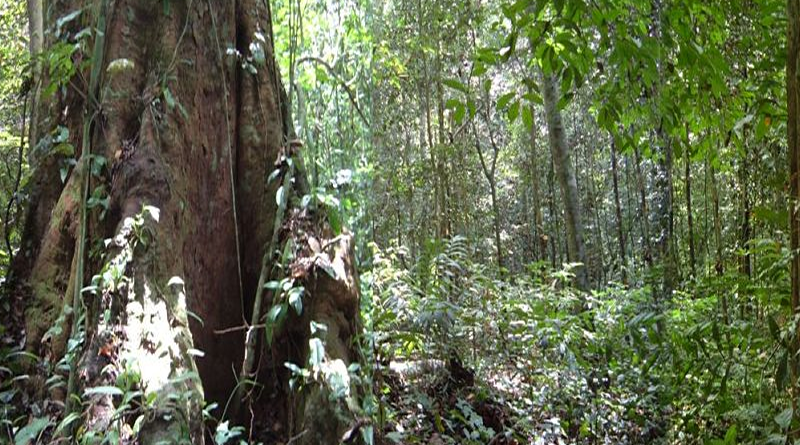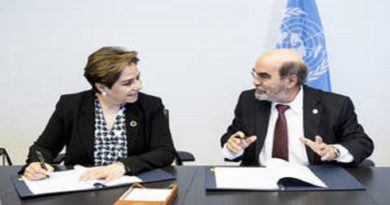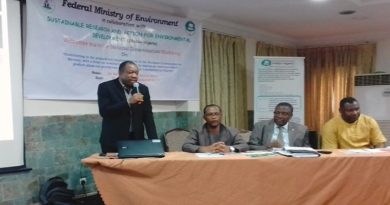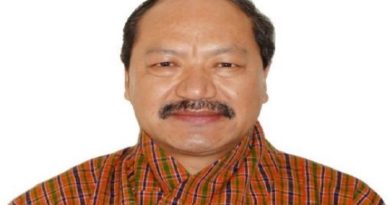Fresh efforts to protect forests launch
A new initiatives aim at monitoring forests worldwide and raise information alert through the use of modern technology was launched at the weekend.
The fresh approach is an initiative of World Resources Institute (WRI), Google and a group of more than 40 partners launched the Global Forest Watch (GFW).
GFW is a dynamic online forest monitoring and alert system that empowers people everywhere to better manage forests.
For the first time, Global Forest Watch unites the latest satellite technology, open data, and crowdsourcing to guarantee access to timely and reliable information about forests.
“Businesses, governments and communities desperately want better information about forests. Now, they have it,” said Dr. Andrew Steer, President and CEO, WRI. “Global Forest Watch is a near-real time monitoring platform that will fundamentally change the way people and businesses manage forests. From now on, the bad guys cannot hide and the good guys will be recognized for their stewardship.”
According to data from the University of Maryland and Google, the world lost 2.3 million square kilometers (230 million hectares) of tree cover from 2000 to 2012—equivalent to 50 soccer fields of forest lost every minute of every day for 12 years. The countries with the highest tree cover loss are: Russia, Brazil, Canada, United States, and Indonesia.
“We are honoured to partner with WRI and power the Global Forest Watch platform with Google cloud technology, massive data and turbo-powered science,” said
Rebecca Moore, Engineering Manager, Google Earth Outreach and Earth Engine. “GFW is an ambitious vision, and yet it’s both timely and achievable given WRI’s knowledge of environmental science and policy, strong partnerships, and the high-performance Google cloud technology that we’re donating to this initiative.”
What’s new about Global Forest Watch:
High-resolution: Annual tree cover loss and gain data for the entire globe at a resolution of 30 meters, available for analysis and download.
• Near-real time: Monthly tree cover loss data for the humid tropics at a resolution of 500 meters.• Speed: Cloud computing, provided by Google, multiplying the speed at which data can be analyzed.• The crowd: GFW unites high resolution information from satellites with the power of crowdsourcing.• Free and easy to use: GFW is free to all and no technical expertise is needed.• Alerts: When forest loss alerts are detected, a network of partners and citizens around the world can mobilize to take action.• Analytical Tools: Layers showing boundaries of protected areas worldwide; logging, mining, palm oil and other concessions; daily forest fire alerts from NASA; agricultural commodities; and intact forest landscapes and biodiversity hotspots.
Today, a group of leaders in government, business, and civil society launched Global Forest Watch at the Newseum in Washington, D.C.
“
Partnerships like Global Forest Watch that bring together governments, businesses and civil society and technological innovation are the kinds of solutions we need to reduce forest loss, alleviate poverty and promote sustainable economic growth,” said
Administrator Rajiv Shah, U.S. Agency for International Development.
”
The way forests are managed needs to be transformed. Our forest strategy for the next four years will address drivers of deforestation more frontally. We have to take deforestation out of the supply chain of global commodities. We will be supporting more sustainable development paths for the Amazon that prevent deforestation tipping points that could result in forest die back. GFW is the kind of approach to support the new strategic goals of the GEF. It connects the newest technology with all stakeholders, providing real time information on which governments, the private sector, CSOs and communities can act on the ground” said
Naoko Ishii, CEO and Chairperson, Global Environment Facility.
Global Forest Watch will have far-reaching implications across industries. Financial institutions can better evaluate if the companies they invest in adequately assess forest-related risks. Buyers of major commodities such as palm oil, soy, timber, and beef can better monitor compliance with laws, sustainability commitments, and standards. And suppliers can credibly demonstrate that their products are “deforestation free” and legally produced.
“
Deforestation poses a material risk to businesses that rely on forest-linked crops. Exposure to that risk has the potential to undermine the future of businesses,” said
Paul Polman, CEO, Unilever. “
That is why Unilever’s Sustainable Living Plan has set targets to source 100 percent of agricultural raw materials sustainably. As we strive to increase the visibility of where the ingredients for our products come from, the launch of Global Forest Watch – a fantastic, innovative tool – will provide the information we urgently need to make the right decisions, fostering transparency, enforcing accountability, and facilitating partnerships.”
Global Forest Watch can support other users like indigenous communities, who can upload alerts and photos when encroachment occurs on their lands; and NGOs that can identify deforestation hotspots, mobilize action, and collect evidence to hold governments and companies accountable. At the same time, many governments like Indonesia and the Democratic Republic of Congo, welcome Global Forest Watch because it can help them design smarter policies, enforce forest laws, detect illegal forest clearing, manage forests more sustainably, and achieve conservation and climate goals.
“
Indonesia is committed to reduce its greenhouse gas emissions by 26 percent, or 41 percent with international support, which reflect national and international commitments to combat climate change. How Indonesia meets that commitment is largely defined by how we manage our forests,” said
Heru Prasetyo, Head of the REDD+ Agency, Indonesia. “
The ability to better monitor our forests and have up-to-date information to make decisions are critical. I commend the Global Forest Watch initiative, will continue to support it, and expect that it will be an effective tool for the world and each nation as we leave neglect and ignorance in the past.”
Global Forest Watch was created by the World Resources Institute with over 40 partners, including Google, Esri, University of Maryland, United Nations Environment Programme (UNEP), Imazon, Center for Global Development, Observatoire Satellital des Forêts d’Afrique Centrale (OSFAC), Global Forest Watch Canada, ScanEx, Transparent World, the Jane Goodall Institute, and Vizzuality. Major companies have also provided early input, including Unilever and Nestle, and the wider Tropical Forest Alliance 2020 Partnership. Core funders include the Norwegian Climate and Forests Initiative, U.S. Agency for International Development (USAID), Global Environment Facility (GEF), U.K. Department for International Development (DFID), and the Tilia Fund.




